Beware ! You're in Kamikazie here. Not many pro luthiers around, more often brave souls experimenting in their kitchen.Neck reset on the "no warranty" Opus X guitar
Simon (SeaChamp) : This Opus X was $450 BIN. It has a couple of flaws as described by the seller, but it is a beautiful guitar, in very nice shape:
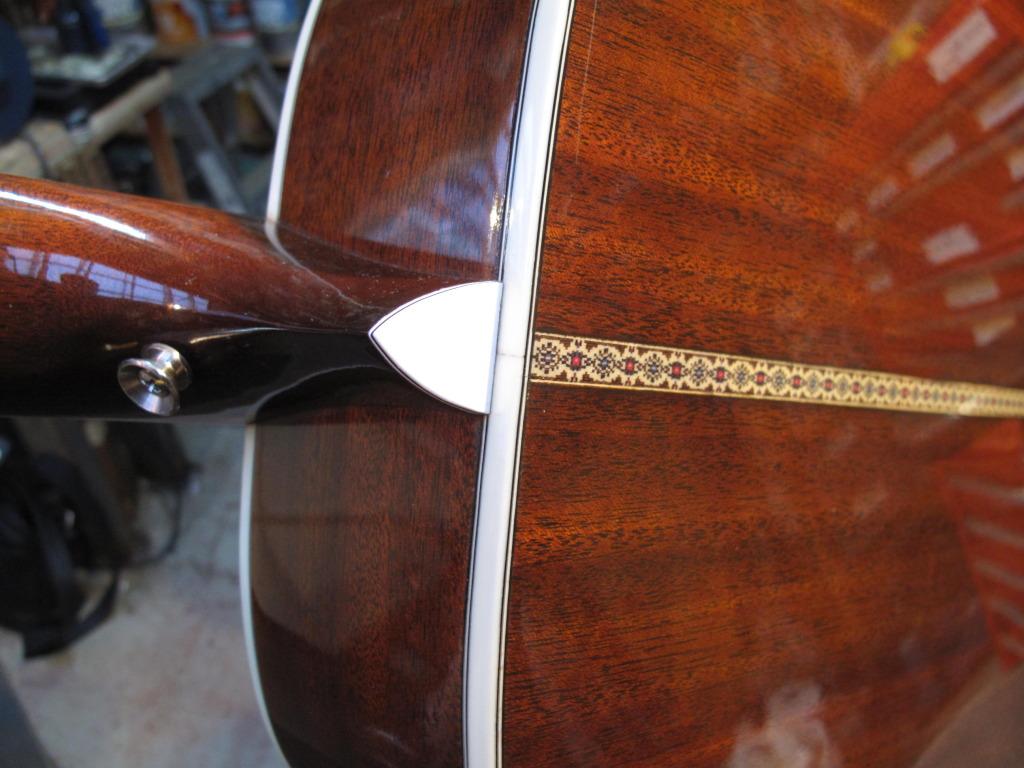
Inside the soundhole it is stamped "no Warranty". Everything looks very tight and well made, and my eye can detect no reason for the disclaimer.
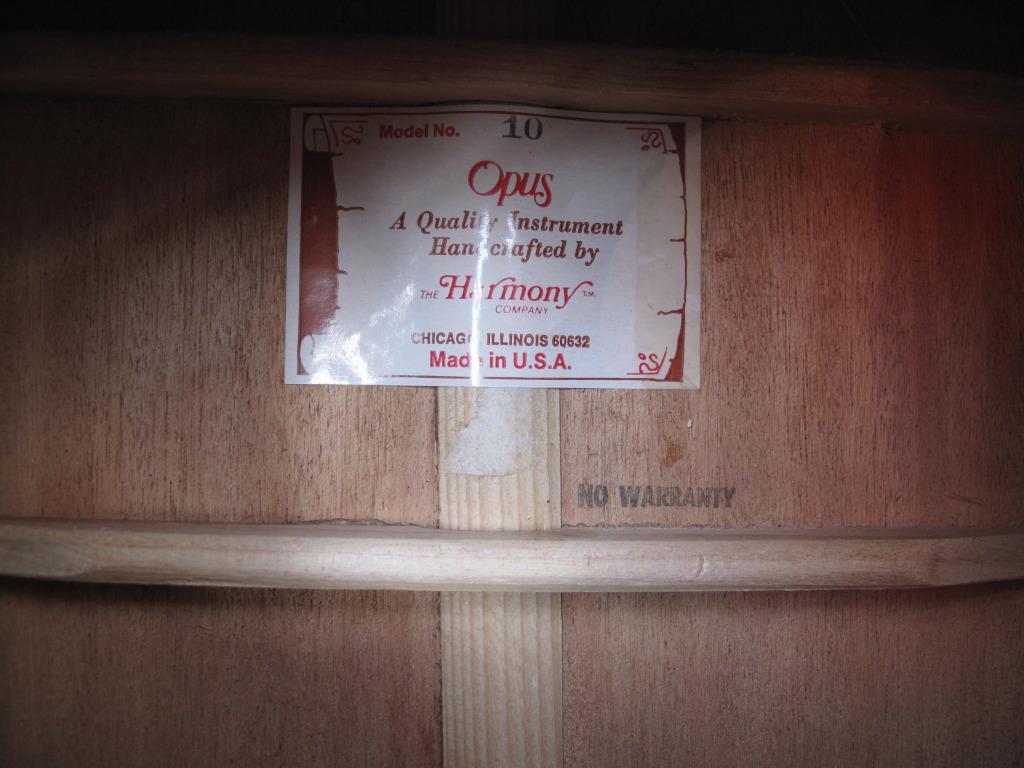
It is ladder braced, scalloped, and sounds something like a 6560. It arrived with 2/32" action, the plastic saddle (carved for intonation) down to a nub, and buzzes. I want to raise the straight edge 5/64", so I want to take a bit less than 1/32" off the heel.
The needle:
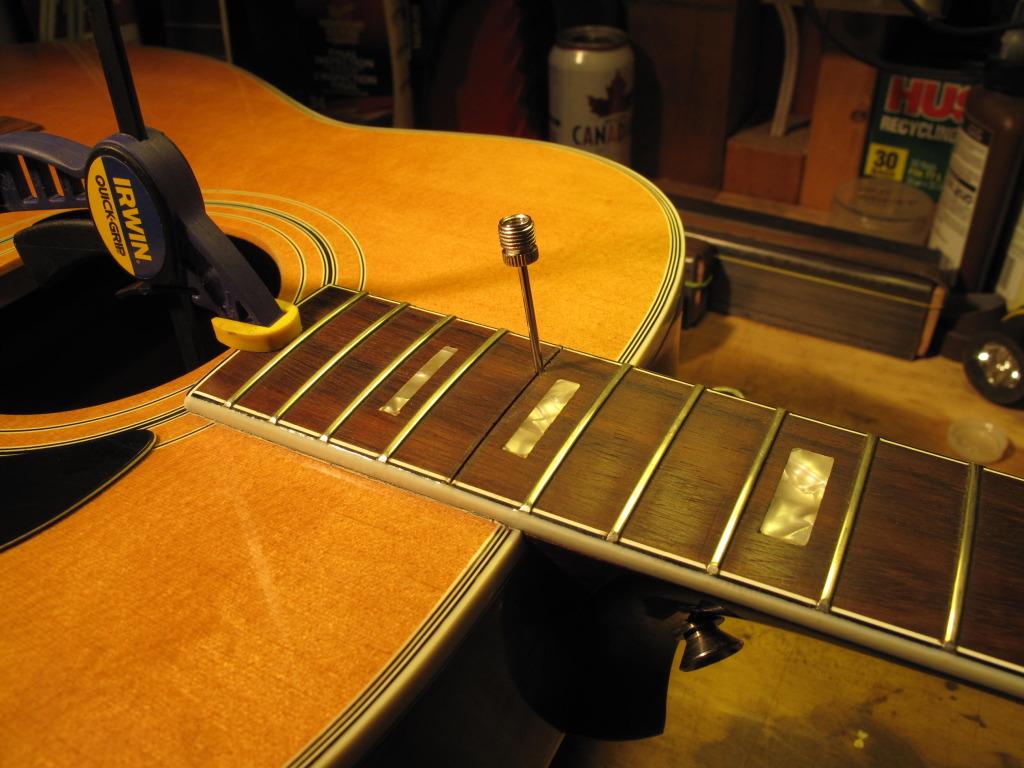
The damage done:
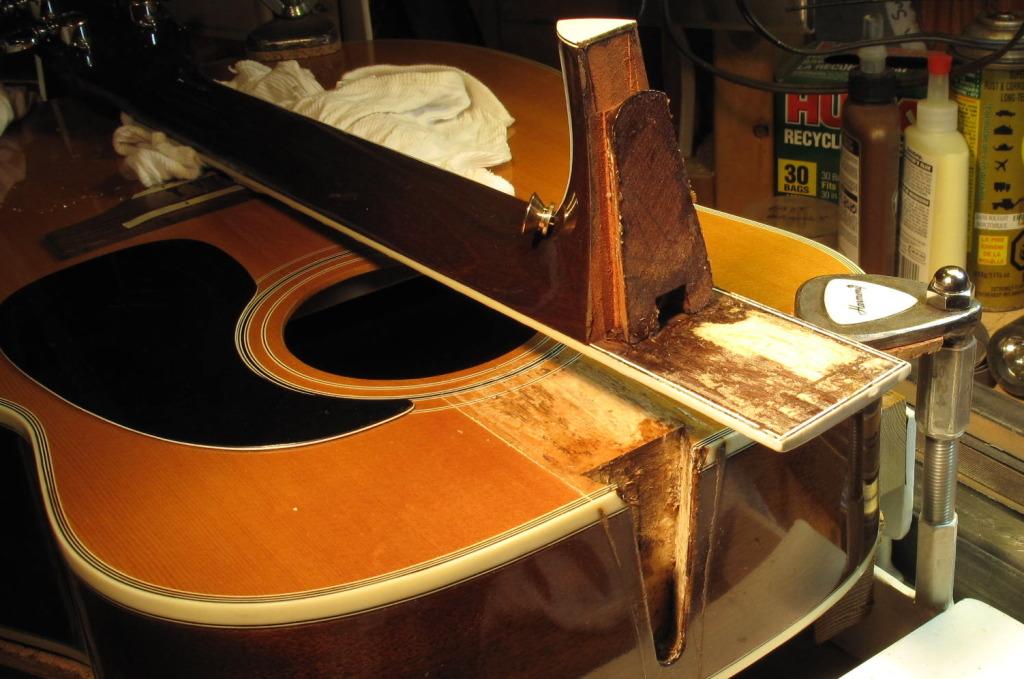
Look at the nice chisel work on the heel. I'm very impressed with the quality of this guitar. In this picture I have not yet cleaned the neck, but I've scraped out the 1/8" of leathery glue that was in the flat of the neck block.
It took about 15 seconds of steam to remove the neck, fastest I've experienced so far. Biggest surprise: there were NO shims in the dovetail! Not such a big surprise: that didn't quite work, so they puttied the joint.
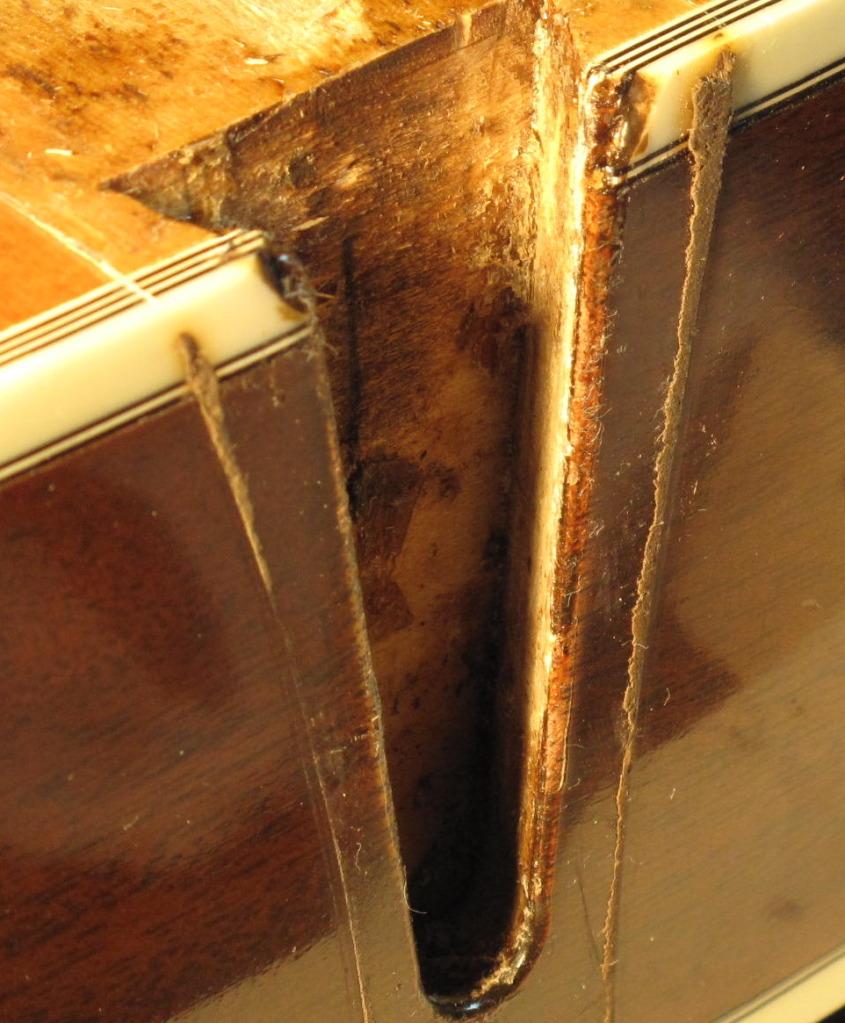
I wonder if the putty is the reason for the warranty disclaimer. Whatever, the fix certainly worked. It's a benign putty too, not like epoxy. I can carve it just a little with my thumbnail, so it shouldn't be too difficult to remove.
I scraped the putty off with an exacto knife, and finished with a fingernail and Meguires.
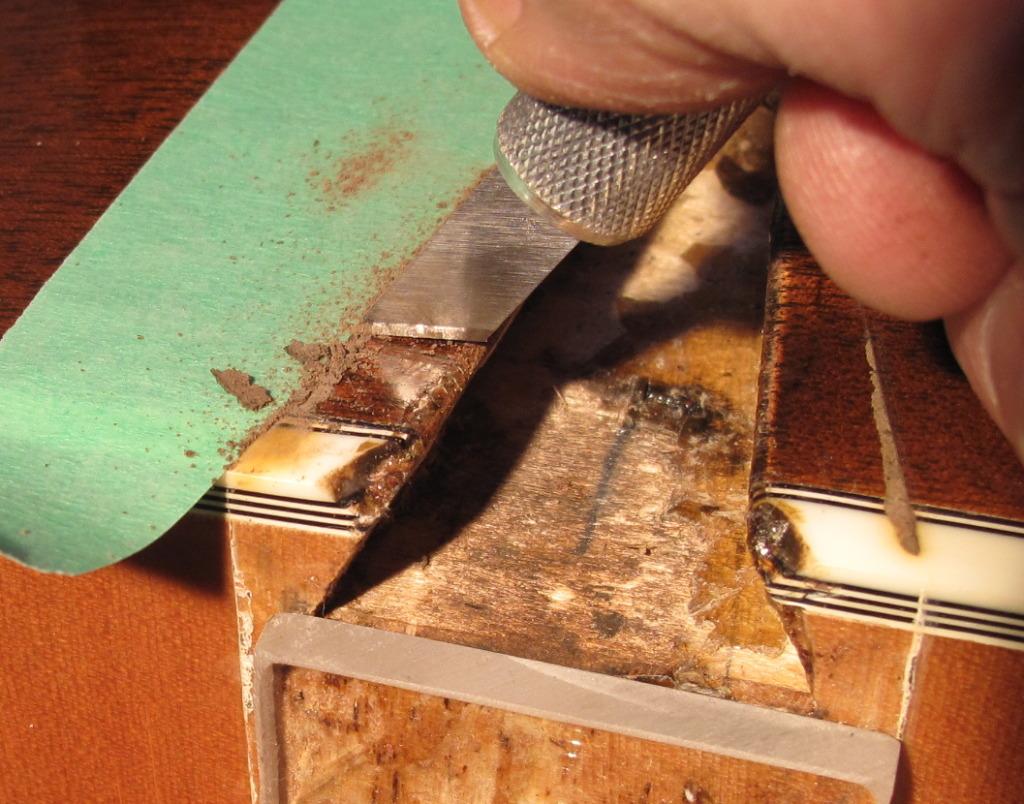
It came off very cleanly and the lacquer underneath was perfect. It's at the bottom of the pile in this photo. The guitar above is a 1260 and more typical - there's a ridge in the lacquer at the neck joint. The guitar at the top has had its neck reset once already, and the lacquer is damaged.
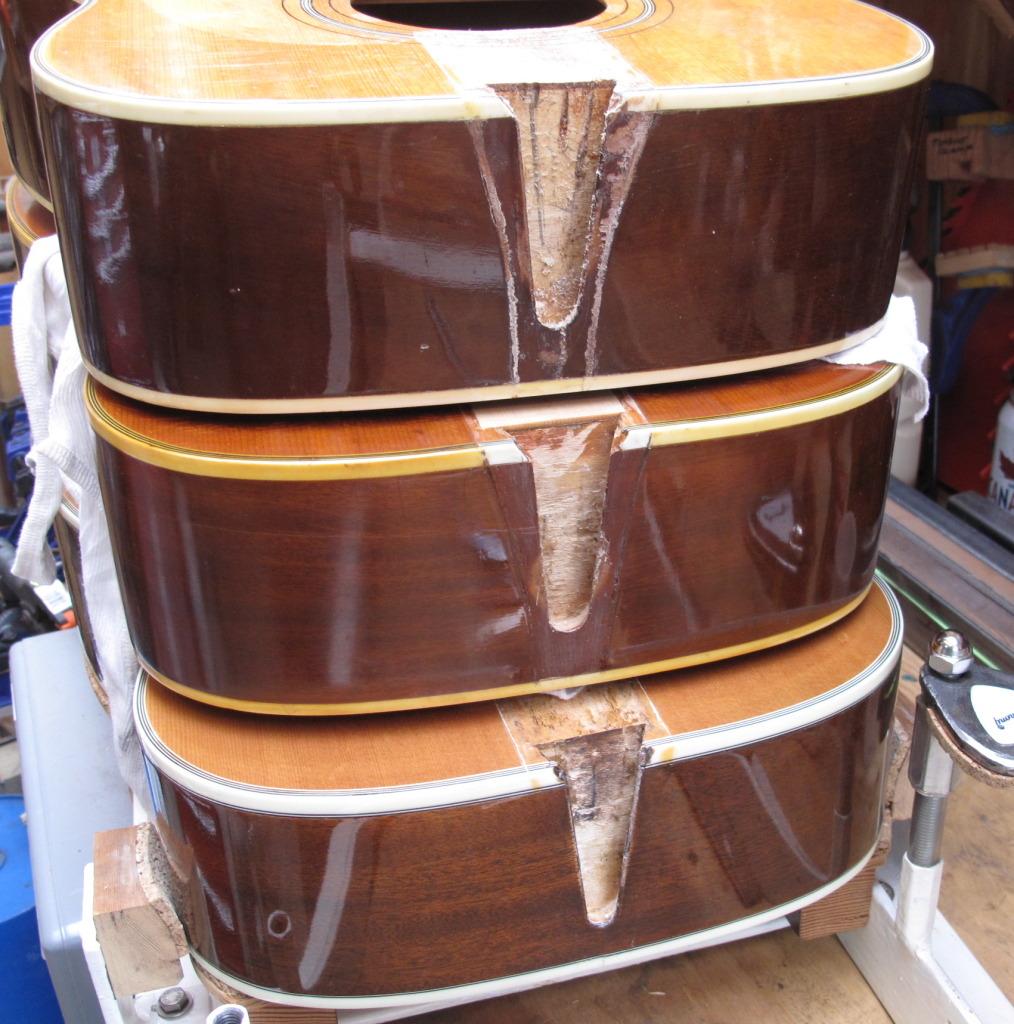
When I'd cleaned the joint up, I squeezed it together to see the factory fit. At its thickest, the putty was 1/64" thick.
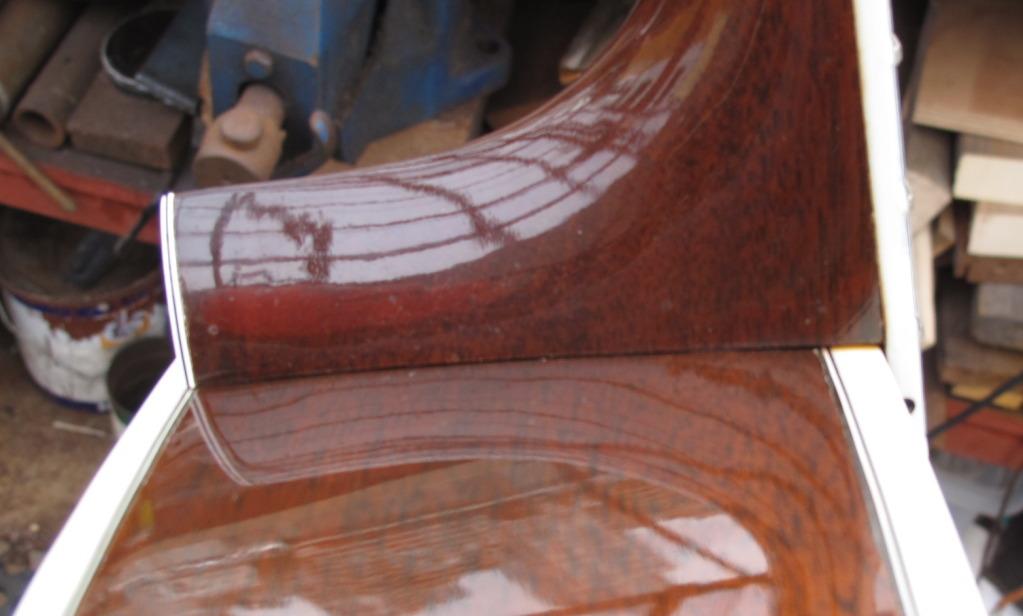
There was a hollow spot in the treble side of the dovetail.
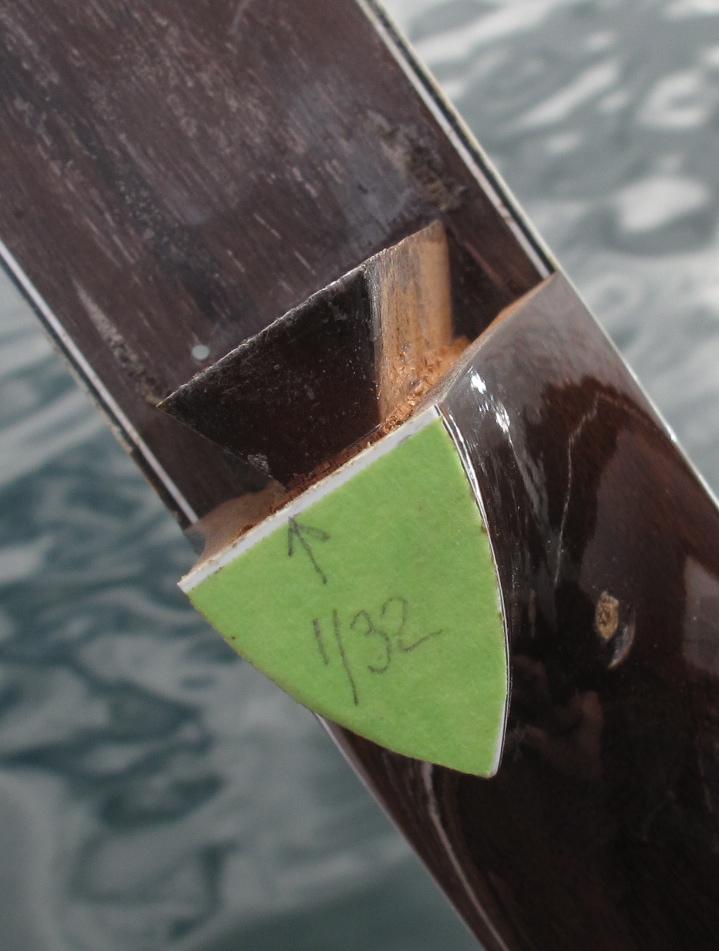
There were some pencil lines drawn on it. There was also a pencil line drawn in the neck block (you can see it in the first photo)
But the strangest thing is that the dovetail is crooked!! Look how the end is cocked over to the treble side of the neck.
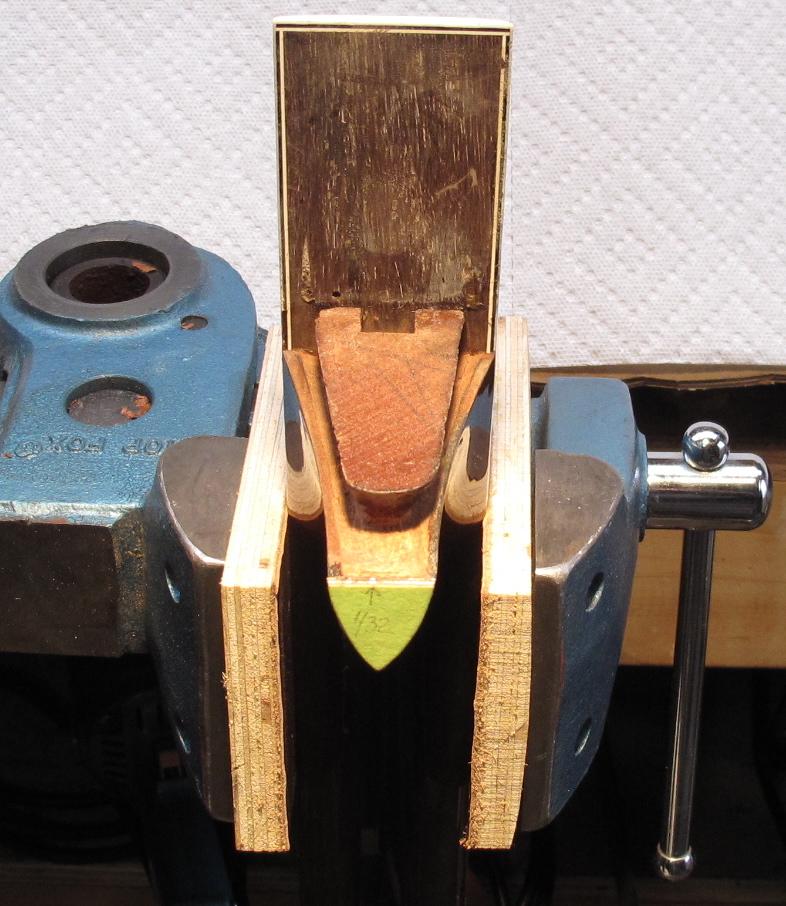
I used my new gouges to carve out the panga-panga on the heel, and I pulled sandpaper to cut the new angle, like Brian Kimsey says.
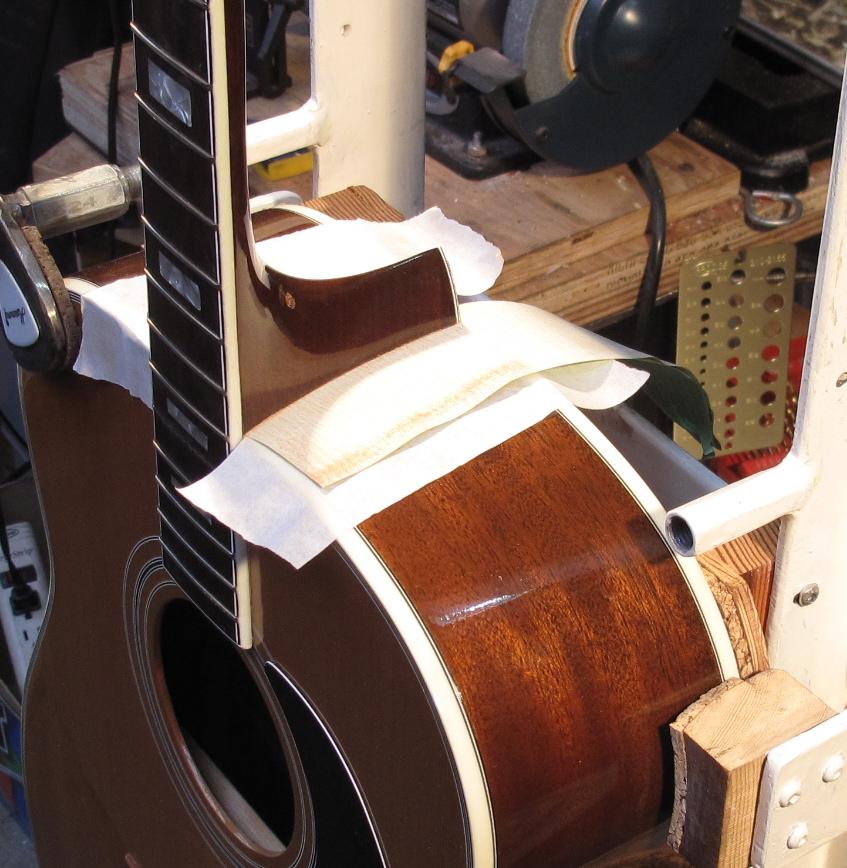
I used 220 to cut and 800 to finish. It took about 30 pulls a side.
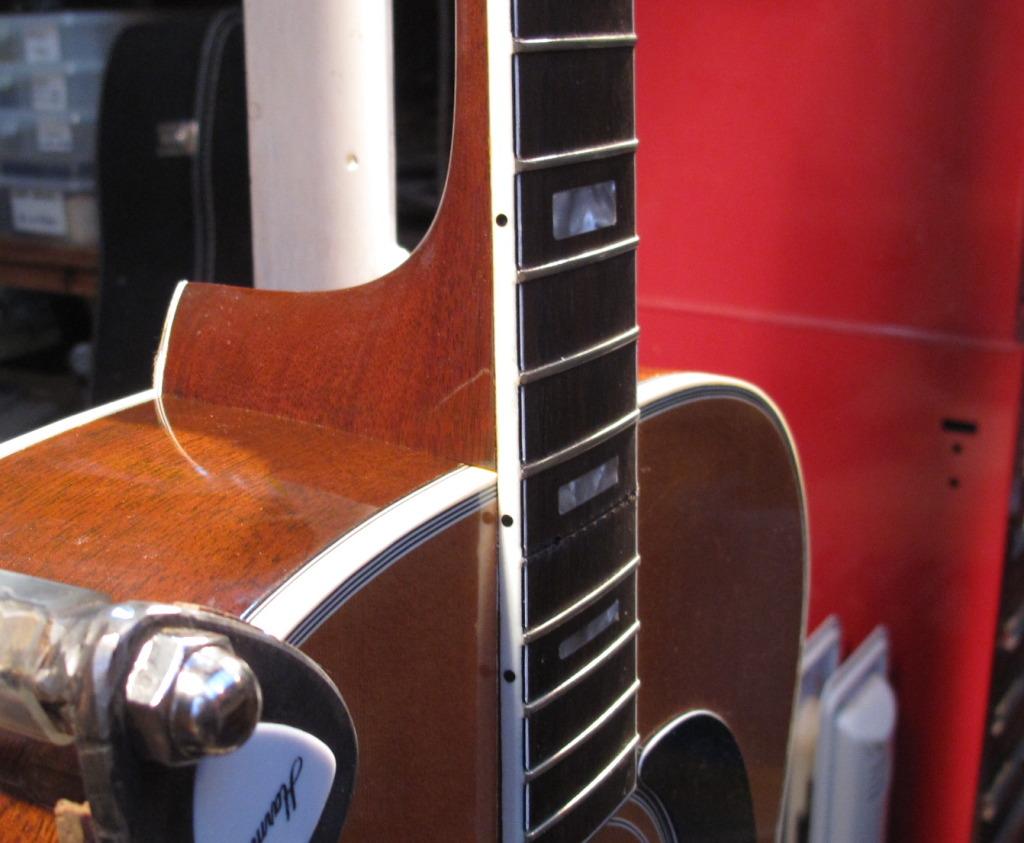
Here's what I've noticed about the crooked dovetail: the socket in the neck block is crooked too. Look at these two bevel gauges, they are set to exactly the same angle:
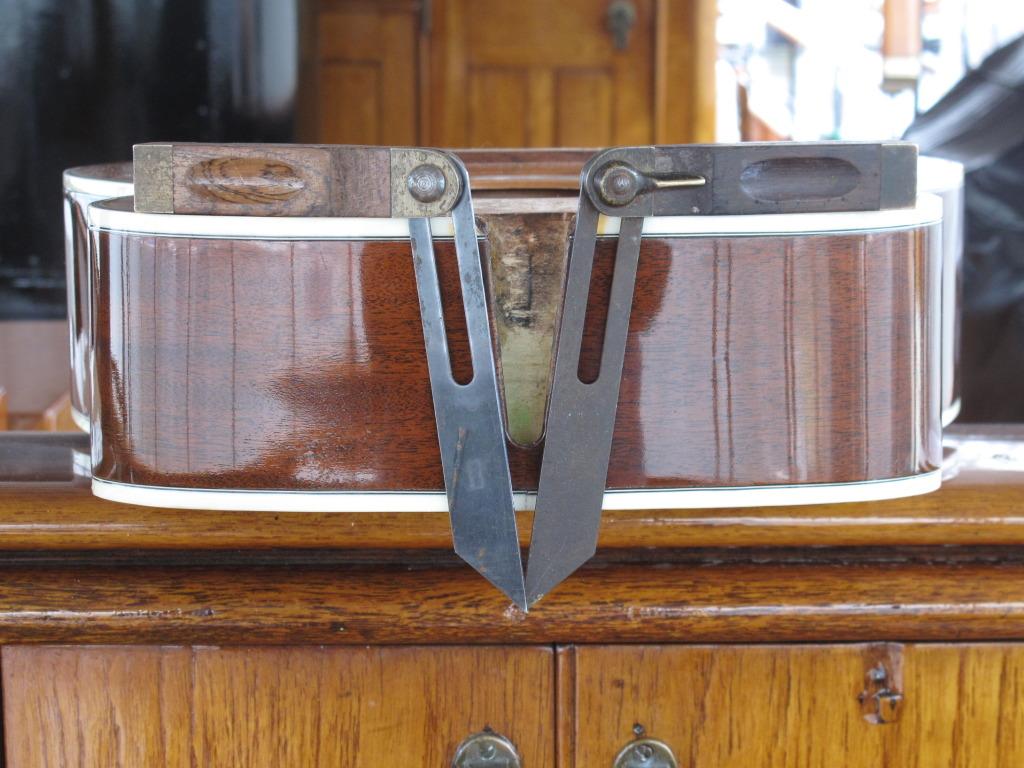
I can only guess that in the factory there must have come a moment when someone noticed the crooked socket. Then someone must have chiseled the dovetail to fit, and they made it fit without shims. Probably did it in less time than it's taken me to write it. And then because the fit was not perfect and putty was added, the product was offered without warranty. That seems to me to be manufacturing at a very high level of skill and integrity.
And I get the leisure to hover over these things and piddle away till I get things as I like them.
I've added .040" shims and filed them till they are snug at the top, but still loose at the bottom so I've glued on more shims. This is the first reset I've done using the parrot vise and Frank Ford's jaw pads. It really makes things easier. There's thin sheet lead under the green tape. It drops in place quickly and doesn't move till it's hit by the file. At last I'm not nicking all the wrong places.
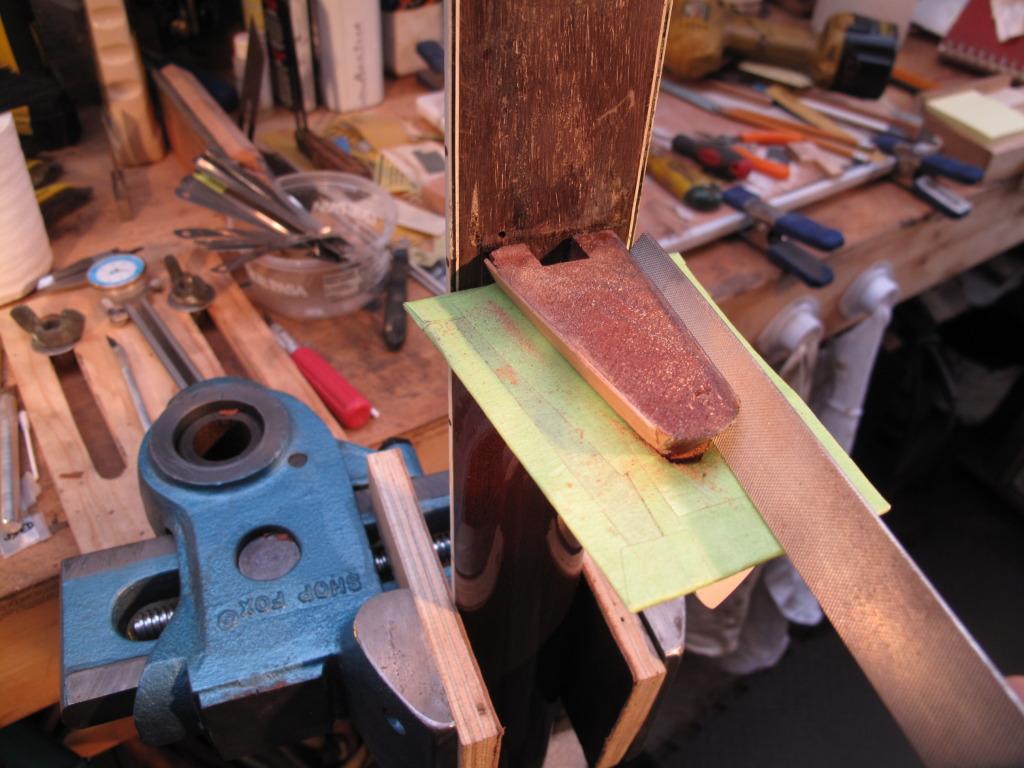
I filed shims until the chalk transfer showed a good fit:

Ready to glue.
But there were a couple of things to do that would be easier before the neck goes on. A crack had appeared in the neck when the strings were loosened. It had been described by the seller as a blemish, and that's what it looked like until the pressure of the strings relaxed. Cryo glue seemed the best solution, but I've heard about its damaging effect on lacquer, and I was nervous.
I spread paste wax around the area:
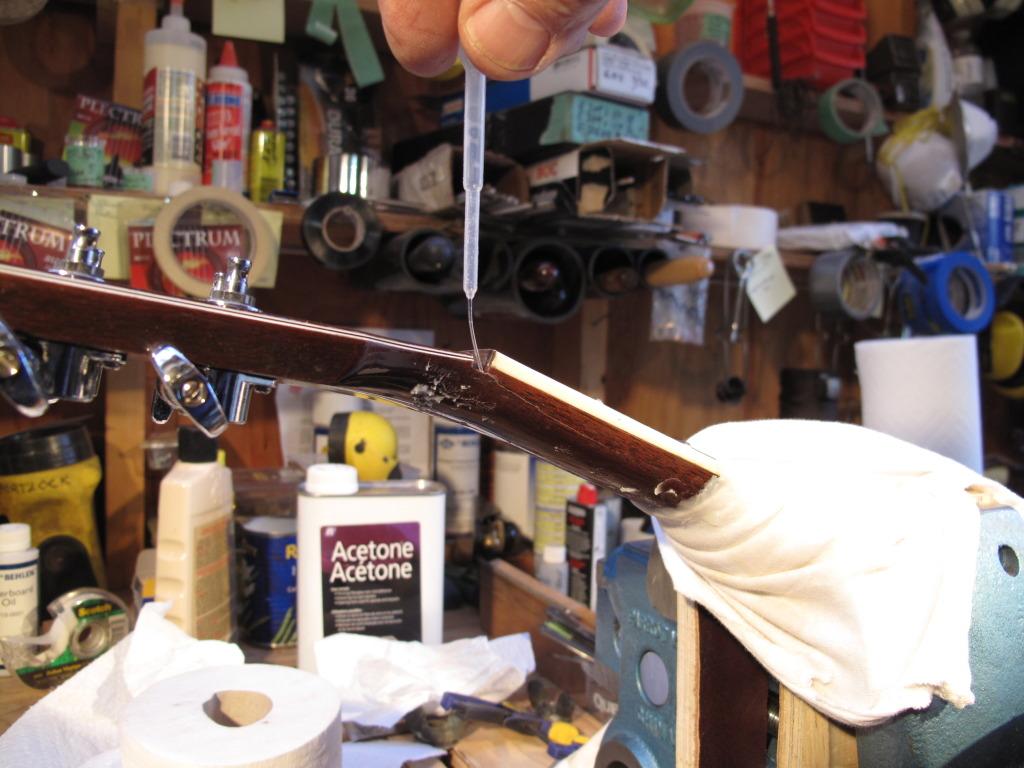
I know this photo makes me look like a barrista - it's a setup. When the actual glue went into the pipette, I lodged my elbow firmly against the vise and held my right hand with my left hand to stop it from shaking so much. Two seconds after squeezing the glue it was glistening in the bottom of the crack. I flicked the pipette onto the floor and clamped the neck with one hand while the other hand wiped frantically.
Done in 5 seconds, and no finish damage:
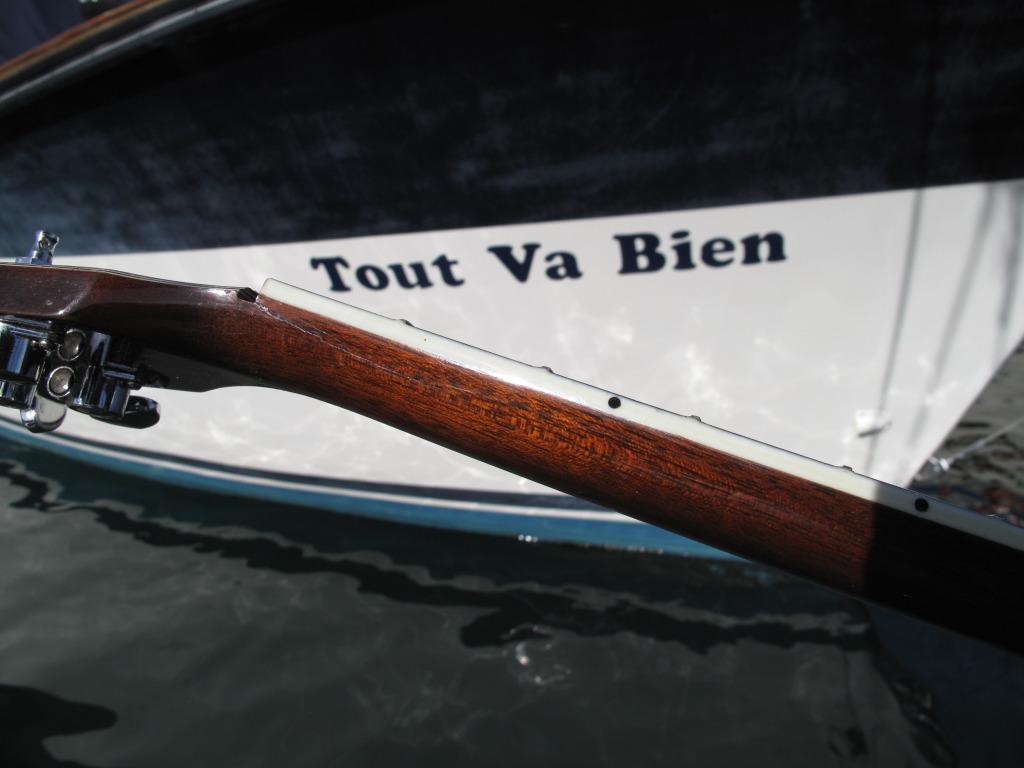
Later I will drop fill this crack with shellac. It won't disappear, but the thumb will never feel it.
I plugged the strap button hole with hardwood. It is surprisingly difficult to drill that angle correctly by eye, and the first guitar I did it on looked as bad as this one, so I made up a little dowel drill guide:

I melted the glue
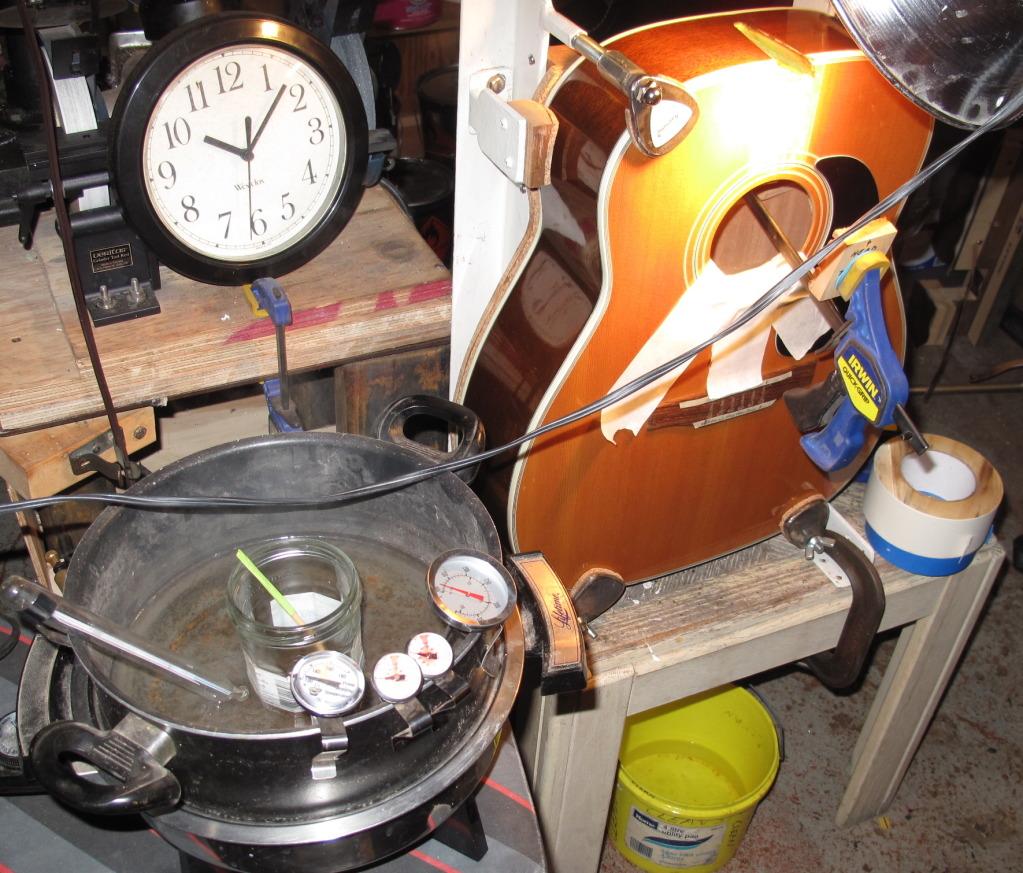
The clock has a nice big second hand to make sure I get the gluing done in less than a minute, and to keep the anxiety level high.
Glued and clamped:

Nice tight joint...the .001 blade will not fit anywhere

BUT...(oh darn)
it's crooked
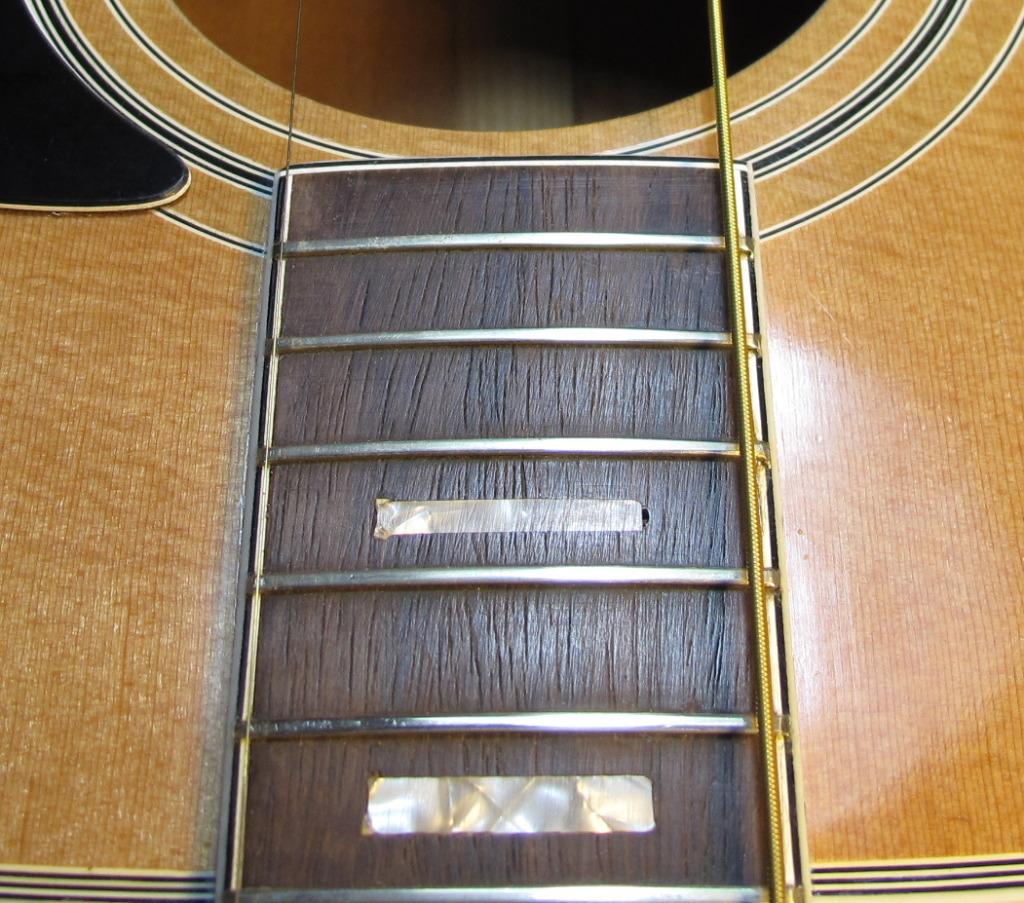
There's not much room for error with this skinny neck. I was wishing I'd done a more accurate line-up mark while I was fitting the neck. I probably should have ignored the marks and let the pin holes be my guide:
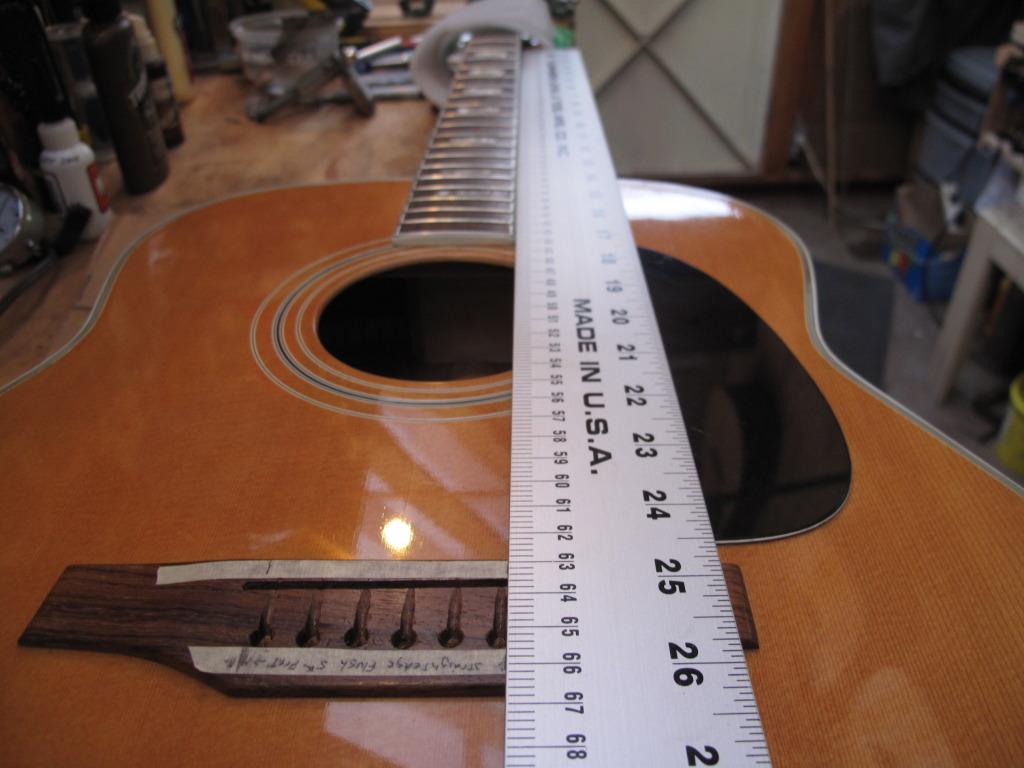
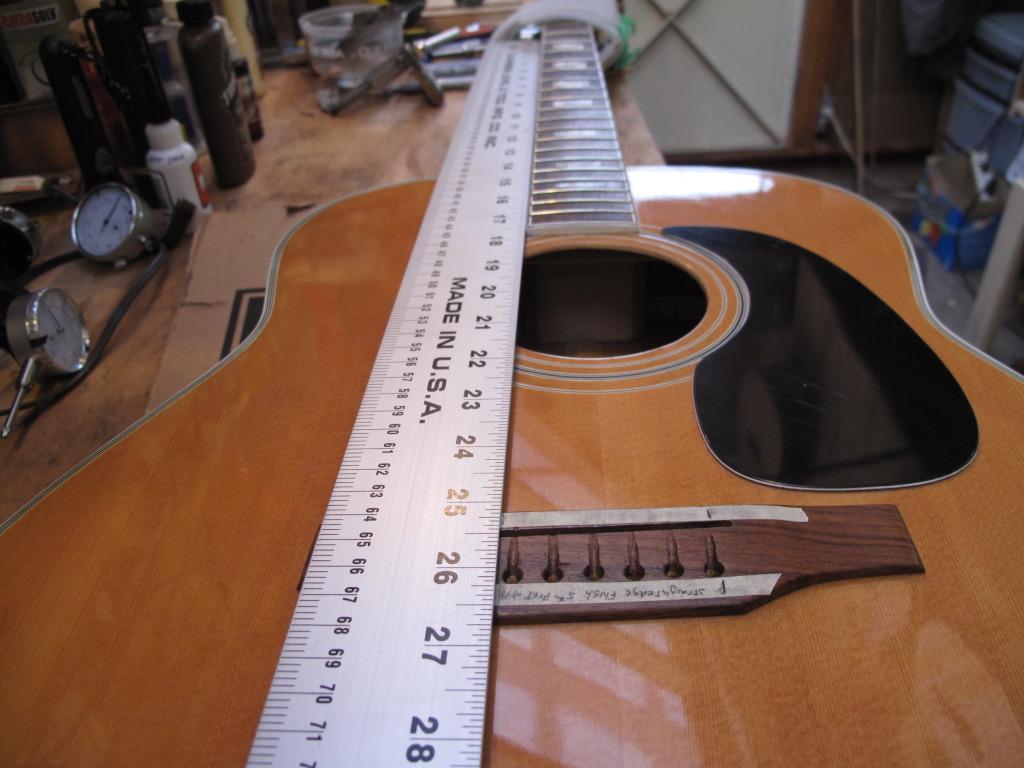
François : WOW... I see how difficult it could be with these narrow necks... Now to plan B ?
fanfab4 : Simon you still did a great job in explaining it all . Guess the only choice now is to remove the neck again.
I see when you did reglue the neck you had a lamp located right near it . Was this used for heat to delay the drying of the hide glue before attaching the neck or just a light source ? Seems the former would be a good idea.
Simon (SeaChamp) : That's right David, it's a 150 watt flood bulb and does a great job. Out of the picture there's another one under the neck. I've used a heat gun before and gotten too enthusiastic and melted the glue on the shims and had to start again.
>>>Guess the only choice now is to remove the neck again
That was certainly my first thought. I almost wouldn't mind doing it to see what my glue job looks like.
But I strung it up yesterday and it feels as playable as when I first got it. I'm going to study the Opus XX to see how the strings lie on the fingerboard of that equally narrow neck.
Francois, I'm really interested in the remarks by Jeff from Seattle on the Opus X page of the database. He narrowed the string spacing at the bridge.
I think I'll formulate plan B very slowly, maybe get Joel to make a bridge. Meanwhile I'm going to carry on with plan A... dress frets and set up.
Carl Croce : Look, this neck was on crooked to begin with so a little trial and error is not something to beat yourself up about. Just add a little bit shim to the bass side and take a little bit off from the trebel.
Simon (SeaChamp) : You're right, Carl. I quit worrying about the string spacing for now. Especially when I compared the Opus XX neck to the Opus X:
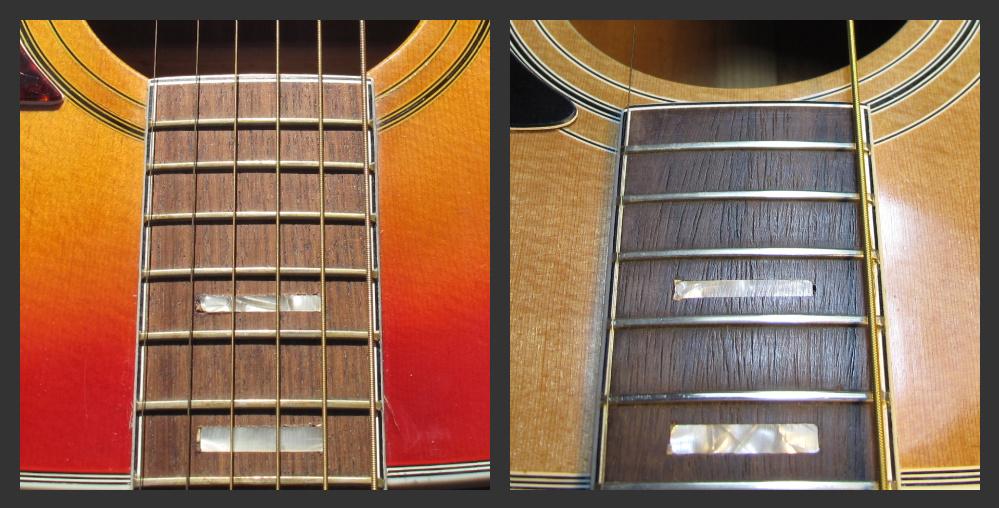
It's interesting to see in this picture how imperfect the inlay work is. When I first saw the XX I thought someone had done some filling in the treble corners of the blocks, but it's the same on the X. Someone in the factory must have finessed all the inlays after they were done. When I pulled tape off the board later, a shim came out of the fifth fret inlay that was only 10 thou thick.
And look: the Opus XX has 20 frets!
These Opus guitars have very narrow necks: 2" at the first fret, 2 1/4" at the twelfth and string spacing at the bridge is 2 1/16". The neck feels incredibly flexible to me, after working on 1260's. I knew that leveling would be a challenge, so I Erlewined my Guillotine jig
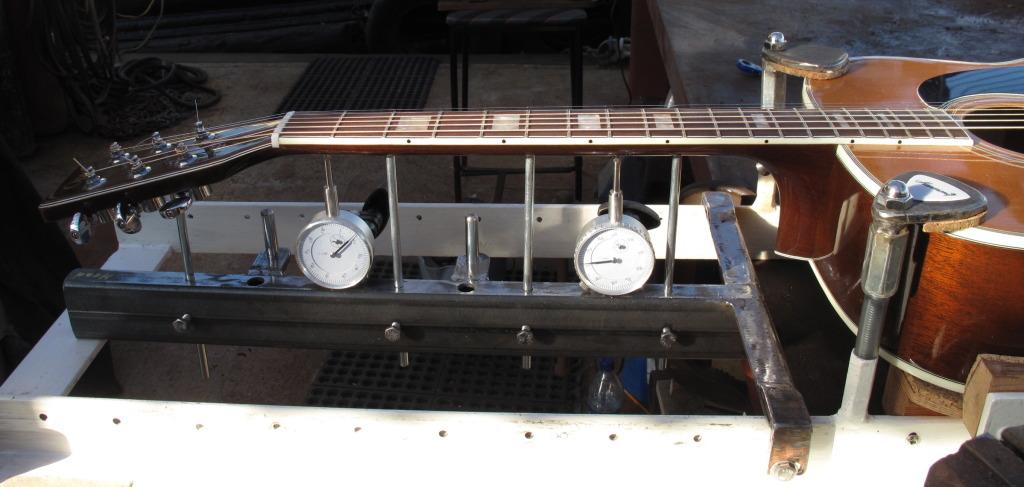
I had been coming close to his concept with my neck saddles, and I'd learned enough to notice that it would be impossible to top Dan Erlewine's design. The two dial indicators monitor the places where relief is measured, the headstock rod holds up the headstock in imitation of string tension, and three evenly spaced support rods hold the neck unyielding while the frets are sanded.
I copied every feature of Mr. E's neck jig. I sincerely hope he's flattered.
It gave me a chance to check out something Dan Erlewine does that I hadn't been able to get my head around - level frets with the guitar in playing position. I zero'd the indicators with the guitar on its back and lifted it onto its side:
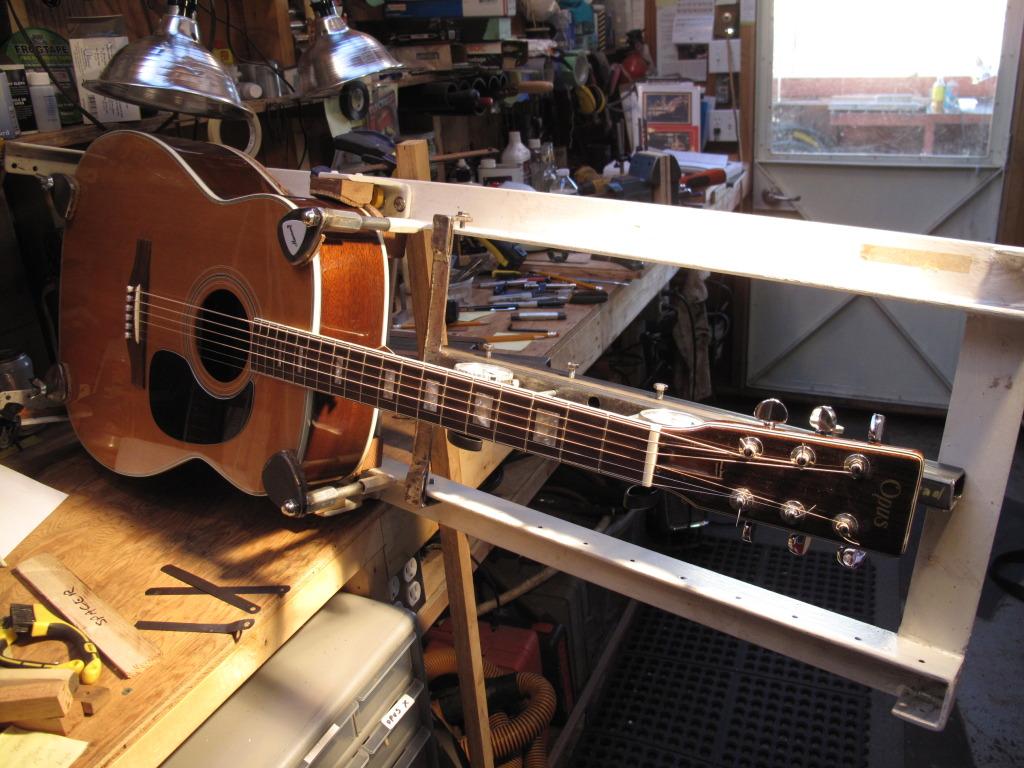
Sure enough, the headstock lifted up .025"!! Whoa! Five thermometers.
I adjusted the jig in that position and laid it on its back to level. I sanded the frets with 320 grit 3M self stick paper on a 1 x 2 flat steel bar
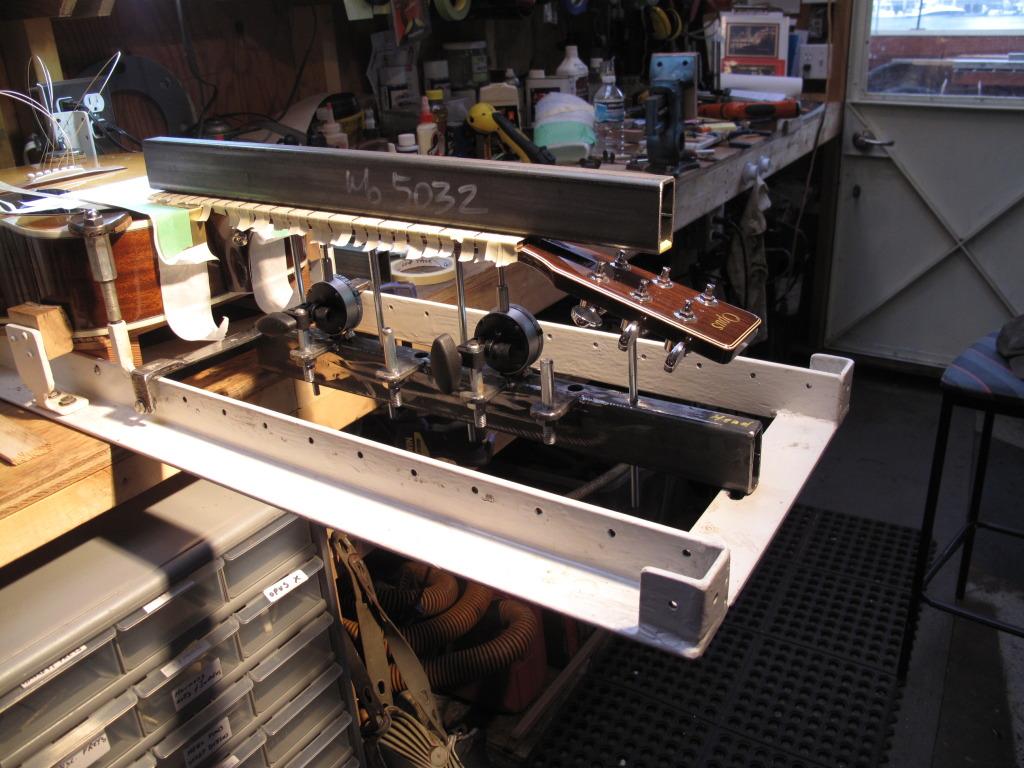
When they were level I crowned with a triangle file, made the saddle, and strung up.

This photo shows the tight grain, the silking, the bear-claw, and the very tiny bit of grain run-out.
The saddle is 3/16 tall and the action is 7/64 - 5/64. Even with that e running off the board, it plays great. It sounds tight, better to me than a 6560 and it still has the jangle of a 1260, though maybe not so woody. And the neck feels pretty sophisticated.
All in all, it's a beautiful Harmony guitar. It is exactly the same shape as a 1260, except that the back has a much bigger bulge - about 3/8". The woods are high quality and the binding is very nicely done.
So how does that crooked neck pocket resolve itself? It took me a while to find out, because the top is perfectly symmetrical. It is revealed in the seam of the back:

The factory carefully lined up the center seam and the binding joint with the center of the bottom of the neck pocket. Then when the neck was to be fit, the problem was noticed. You can maybe see the tiny line scribed on the treble side of the heel, and you can tell that the binding join is not in the center of the heel cap. At the waist, the back seam measures 1/16" closer to the treble side.
And here's that picture you asked for Jay
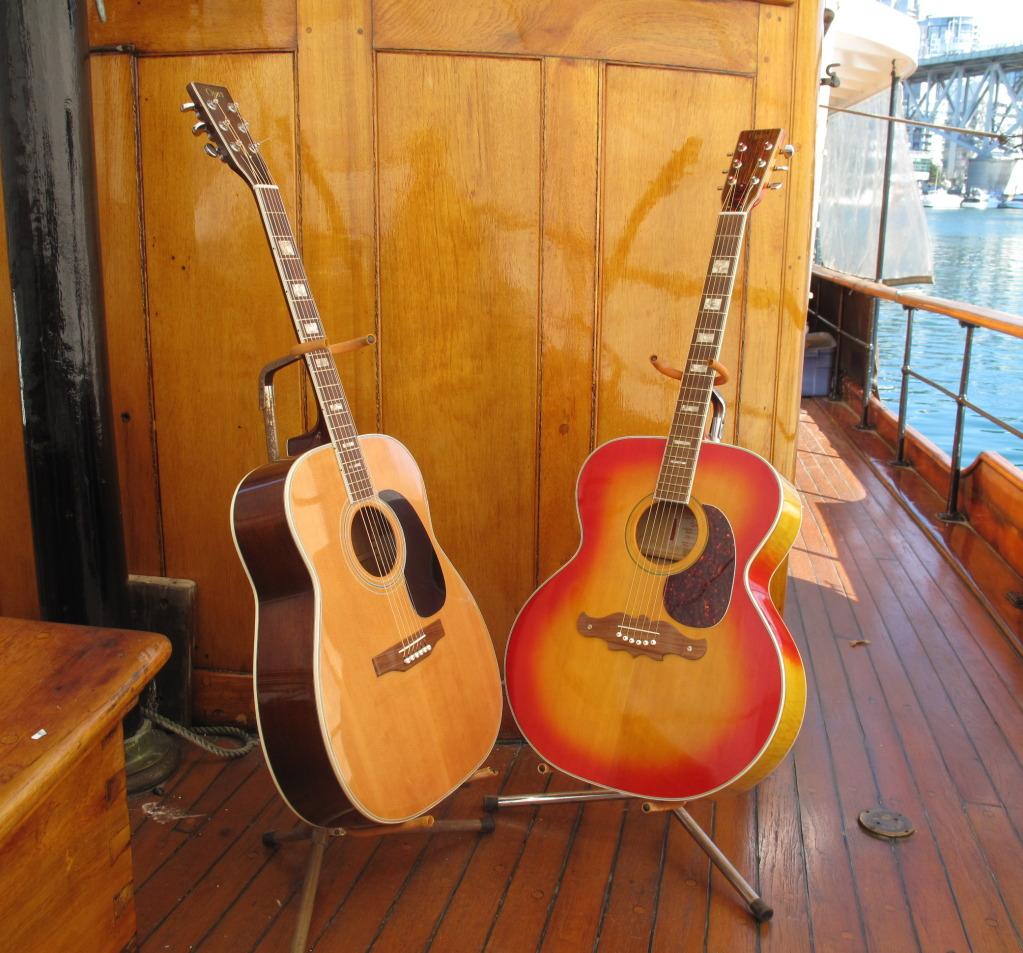
february 2011
back to Kamikazie Lutherie Index |


